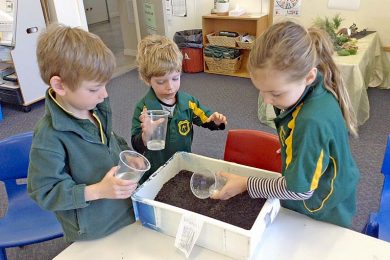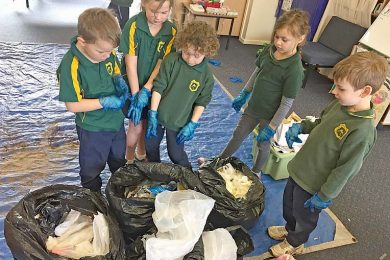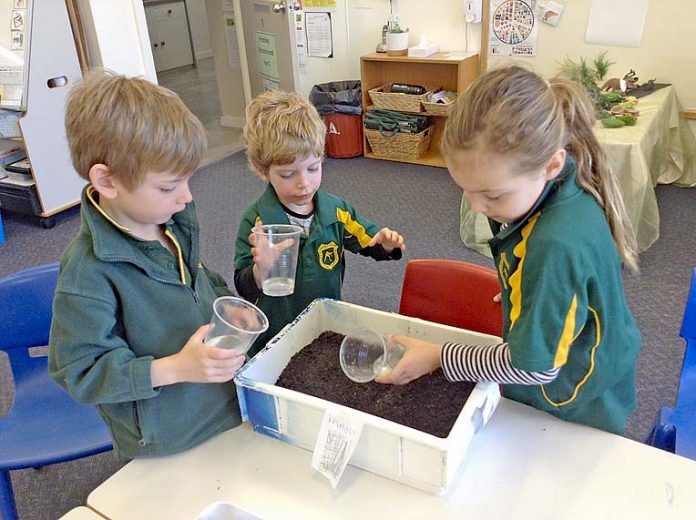
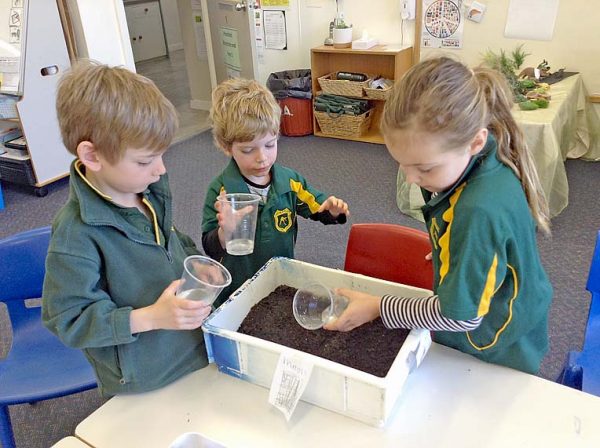
KANGAROO Inn Area School students have devised a solution to reduce pollution on their school grounds in a bid to fight the war against waste.
Last term Amy William’s reception and Year 1 students explored chemical sciences through their inquiry – war on waste – and implemented their learning into keeping the school clean and green.
Students studied how they could reduce the environmental impact of waste and developed their knowledge of material properties to make more sustainable decisions in relation to shopping and waste disposal.
“Through the unit, students learned how our actions can affect the environment, their responsibility in making sustainable decisions for the future of our environment and what changes we can make to live more sustainably,” Ms Williams said.
As part of the inquiry students participated in a number of learning experiences including collecting rubbish from the school and sorting it into food scraps, paper, paper towel, soft plastic and landfill.
“The children were surprised to see how much food waste there was – including food that had not been eaten at all,” Ms Williams said.
“They decided we could take this down to the school’s chickens so it did not go to landfill and we also decided to put the paper towel and paper into a compost heap.
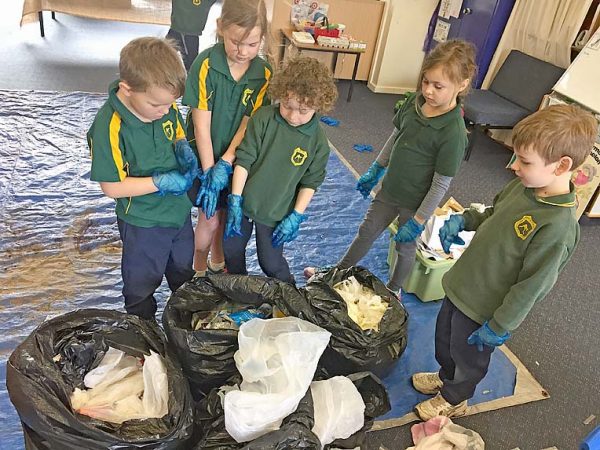
“Furthermore we devised a solution to the food waste at school by putting food scrap containers in each classroom, which can be taken to the chickens and compost.
“We collaborated with the year 9 and 10 students to set this up and decided how it could be managed.”
Ms Williams said the food scrap bins had been well received and used by the entire school community and were emptied at the end of each school day.
Students were given the opportunity to venture outdoors for the project and attended an excursion to the Millicent Resource Recovery Centre where they witnessed what happens to different types of waste, before visiting the Canunda rubbish dump.
“At our excursion to the resource recovery centre we learned a lot about what happens to different types of waste and how lots of things can be recycled and reused rather than going to landfill,” Ms Williams said.
“Any wood including cupboards, tables, chairs, beds and window frames are broken down and chopped up with garden waste to create mulch.
“People collect this mulch to put in their gardens and the council uses this on public gardens in the Wattle Range area.
“Bricks, stone, concrete and rocks are crushed down to gravel size and are used as parking areas and road surfaces.
“They also use it to build up roads and then put bitumen over the top.”
Other learning experiences included making paper to show the process of recycling to create new paper, designing and making an experiment to test which materials would rot and break down over time and creating a dance to represent how a turtle would feel in the ocean if it’s home was polluted with rubbish.


